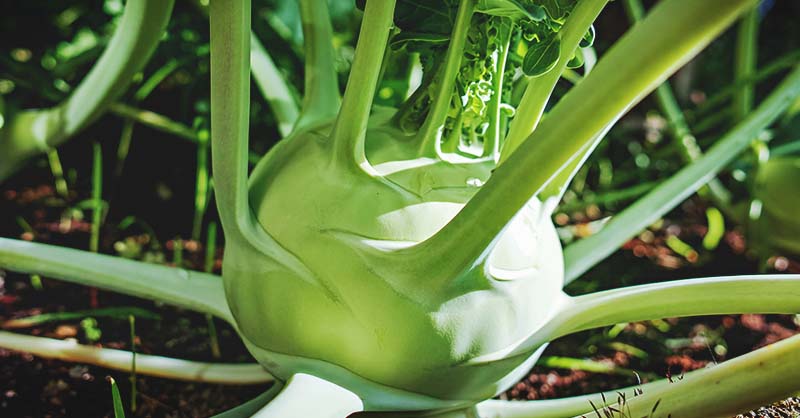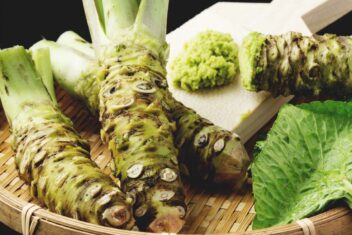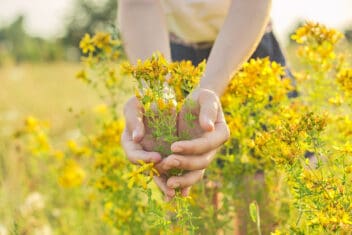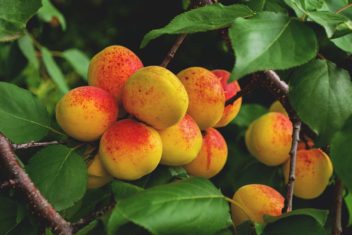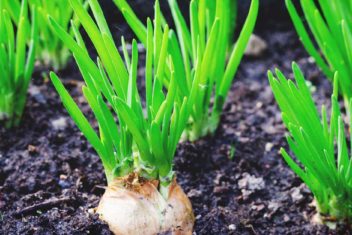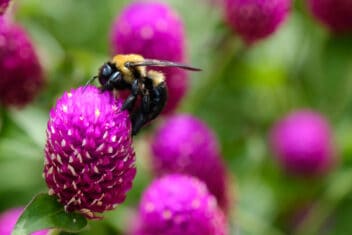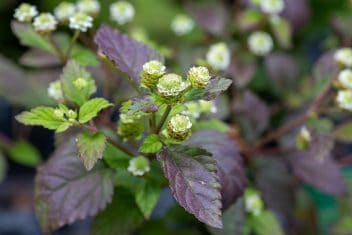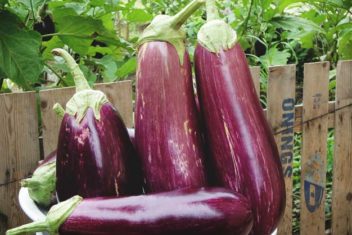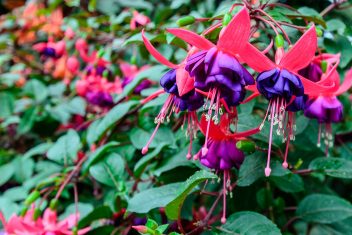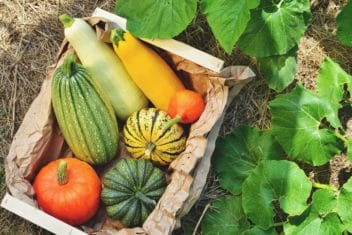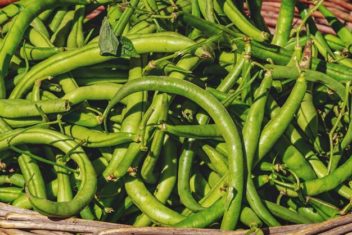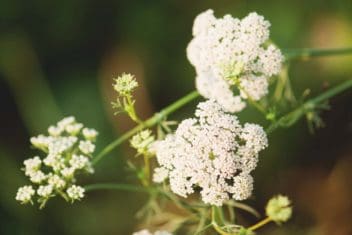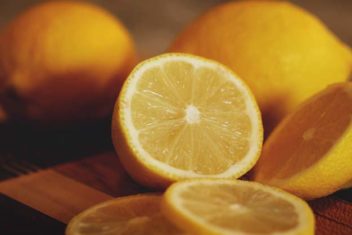Have you ever heard of kohlrabi? Until a few years ago, growing kohlrabi never crossed my mind because I had no idea what this crop was. Kohlrabi is a member of the kale and cabbage family with a flavor similar to turnips, and it’s made a splash on the farmer’s market scene lately.
I recently went to a friend’s home, and she made kohlrabi chips. Yes, really! They were these thin slices of baked veggies with a sprinkle of salt. Their crisp texture and sweet, cabbage-like flavor made them strangely addicting to everyone at her party.
At first, kohlrabi looks a bit strange. It has a bulb-like stem that slightly resembles a radish, but it grows above the ground. If you can get past the peculiar look, kohlrabi is a fast-growing cool-weather crop that is high in fiber and vitamin C. In under two months, they’re ready to harvest, so they’re a great addition if you want to increase your harvest amount each year.
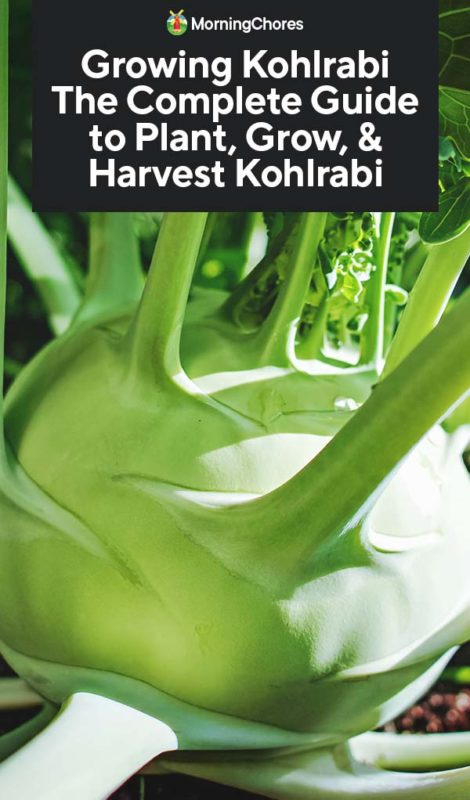
Kohlrabi Varieties
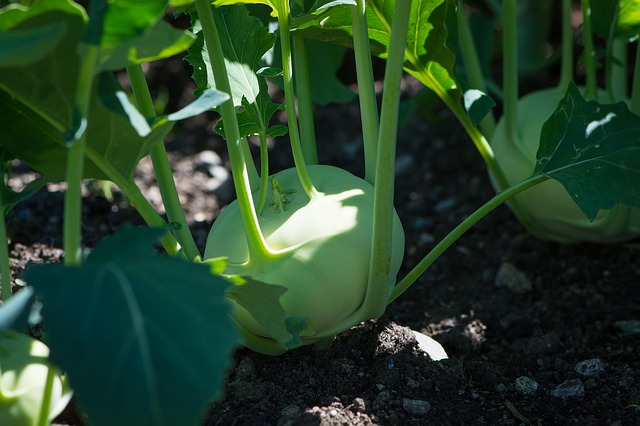
You can find several varieties of kohlrabi (Brassica oleracea) plants. No matter the type, they are all hardy biennial plants that look like a turnip growing on cabbage root. The stems can be white, purple, or green, topped with blue-green leaves.
Here are a few popular kohlrabi varieties that you might want to grow.
Early Purple Vienna
This variety of kohlrabi has lovely leaves and looks decorative in your garden. It features purple skin and sweet, white flesh that tastes excellent cooked or raw. Matures in 60 days.
Early White Vienna
This variety is best if you eat them fresh. It features a pale flesh that is tender and deliciously sweet. White Vienna grows smooth globes with tender meat. Matures in 55 days.
Grand Duke
If you want shockingly large kohlrabi, Grand Duke can outgrow many other heirloom breeds. It’s a light green variety with sweet, tender flesh. Matures in 50 days.
Planting Kohlrabi
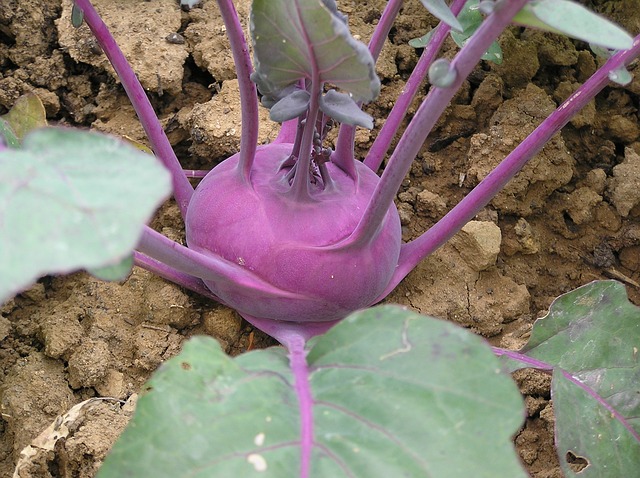
Growing kohlrabi isn’t too much different than growing cabbage, turnips, or other cool-weather crops. They all have similar soil requirements, location preferences, and water needs. Let’s take a look at what you need to know to grow kohlrabi in your garden beds.
Growing Zones
Kohlrabi grows well in zones 3-10.
Soil Requirements
Like many cool-season crops, kohlrabi is a heavy feeder, so it prefers fertile, well-draining soil. This crop prefers ground within the 5.5 to 6.8 range. Soil closer to the 6.5 to 6.8 discourages clubroot disease, which is problematic for this crop.
Before planting, work aged compost in your garden beds before sowing. Another smart idea is to add nitrogen-rich amendments, such as blood meal and cottonseed meal, to your soil before planting.
Sun Requirements
Before you plant kohlrabi, you need to pick the right location. This crop requires full sun or partial shade at the most. If you plant midsummer for a fall crop, some afternoon shade can help keep the seedlings cooler than they would be in full sun.
If you aren’t too sure, watch the location that you prefer in your garden and time how much sun it receives. Kohlrabi needs at least six hours of full sun each day, but more is better.
The Best Time to Plant Kohlrabi
Kohlrabi is a cool-season crop. That means you don’t want to plant it in the summer. If you live in the North, plant in the spring, the fall, or both. In the South, plan for kohlrabi to be a winter harvest, planting in the fall.
You must pay attention to temperatures. Kohlrabi prefers cool temperatures between 40℉ and 75℉. Most varieties take 45-60 days to reach maturity, and they should reach maturity before the temperatures increase much higher than that. So, plan accordingly based on your average regional temperatures.
Direct Sowing
If you want a spring crop, plant the seeds outside after the danger of a hard frost passes. If you want a fall crop, put the seeds in the ground in midsummer. Then, plant in the fall for a winter crop. Kohlrabi is an excellent choice for fall gardens!
Planting by Seed
Sow the seeds ½ inch deep and 1 inch apart, or the best that you can do. Once the seedlings sprout and are a few inches tall, thin the seedlings 4 inches apart. You can transplant the thinned seedlings to another part of your garden.
Transplanting
Transplant seedlings when they have 3-4 true leaves. Harden off for a week or two to prevent shock.
Spacing
Many gardeners direct sow kohlrabi seeds outside. Plan for rows to be spaced 12-18 inches apart. Kohlrabi seeds are tiny, so it’s difficult to space them appropriately at first.
Container Growing
Just because you have a smaller garden area – or a lack of a garden – doesn’t mean you can’t grow kohlrabi. This crop is an excellent selection for container gardens!
Make sure to pick a large enough container. IT\t needs to be at least 16 inches in diameter and 16 inches deep. Fill it with high-quality potting soil that contains nutrient-rich compost.
Caring for Kohlrabi
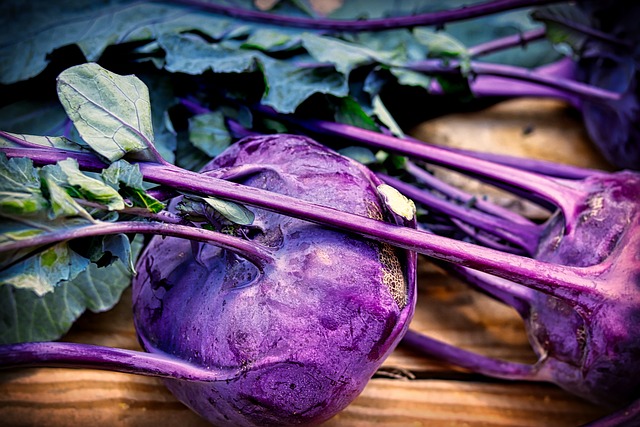
Now that you are growing kohlrabi in your garden beds, here is what you need to know about keeping those plants growing healthy and to their full potential.
Water Needs
Remember that kohlrabi is considered a cool-weather crop, and most of those types of plants require moist soil. So, keep the soil evenly moist for fast growth. If your plants go without water for too long, they’ll become woody. Aim to give your plants 1-1.5 inches of water each week or more.
Fertilizing
If you apply compost before planting, you typically don’t need to use too much fertilizer. You can add 3-4 quarts per 100 sq feet of an organic all-purpose 5-5-5 fertilizer before sowing or transplanting. That’s about all these plants need. You also can side-dress kohlrabi with aged compost at midseason for a boost of nutrients.
Mulching
Mulching around your plants is an excellent idea because it helps to keep the soil moist and reduces soil temperatures. You can mulch around the plants with compost, finely ground leaves, or ground bark. Mulching also has the added benefit of reducing weeds, and everyone likes fewer weeds in their garden.
Companion Plants for Kohlrabi
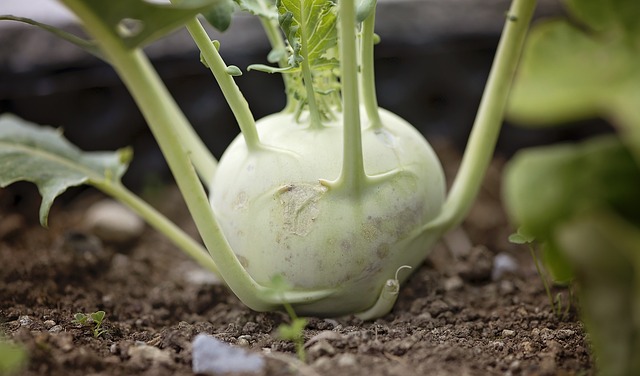
Luckily, you have plenty of options for awesome companion plants for kohlrabi! It’s not hard to find a few selections that you probably already have going into your garden. Here are a few of the top picks:
- Beets
- Bush Beans
- Celery
- Cucumbers
- Lettuce
- Herbs
- Onions
- Potatoes
- Thyme
- Nasturtium
More importantly, remember not to plant kohlrabi with pole beans, strawberries, peppers, or tomatoes.
Common Pests & Diseases
A variety of pests and diseases can attack kohlrabi, so taking special care can save your harvest. Here are a few pesky creatures and diseases to watch out for each year.
Cabbage Loopers
This pest causes large or small holes in leaves. They’re caterpillars that are pale green with a white line running down either side of their body. The insects can overwinter as pupae in debris.
Usually, you can keep cabbage loopers in check by introducing natural enemies to your garden. You also can hand-pick larvae off of the plants. If you want to use an application, try applying Bacillus thuringiensis, which is an organic control method that kills younger larvae.
Cabbage Aphid
Cabbage aphids are, as the name implies, a type of aphid that targets brassicas. They are gray-green with a white waxy coating. A serious infestation can stunt the growth of your kohlrabi. They also spread disease.
Unlike other aphids, you can’t blast these off of plants. Their waxy coating proects them. Use an insecticidal soap instead.
Cutworms
Another common pest is cutworms which love to cut the stems of young transplants and seedlings at the soil line. They prey on a range of plants, such as beans, cabbages, carrots, kohlrabi, and tomatoes.
Remove all plant residue from the soil after harvest or wait at least two weeks before planting. You can also make a plastic or foil collar to fit around the plant stems that cover the bottom 3 inches. Make sure to hand-pick larvae after dark, and spread diatomaceous earth around the base of the plants.
Clubroot
If you notice stunted plants with yellowing leaves that wilt during the day, you might have clubroot. This disease also causes distorted roots and gall formations, and it can live in the soil for up to 10 years. Clubroot spreads by the movement of contaminated soil.
Eliminating clubroot is hard if not impossible. Applying lime to the soil can reduce the spread of the fungus and plant only certified seeds. Avoid field grow transplants!
Downy Mildew
Another common disease is downy mildew, which can cause irregular yellow patches on leaves that eventually turn light brown. You might also notice fluffy gray growth on the underside of the leaves. It’s a disease that prefers cool, moist conditions.
To get rid of downy mildew, remove all of the crop debris after harvest and be sure to rotate with non-brassica family members. Sometimes, the application of an appropriate fungicide can be helpful.
Powdery Mildew
Powdery mildew is a fungal disease that is spread via wind and water from rain, irrigation, or high humidity. Young plants are most susceptible. You’ll first notice powdery white spots on plants and later you’ll see buds and growing tips become disfigured.
Destroy seriously infected plants and spray remaining plants with a good fungicide.
Harvesting and Storing Kohlrabi

The best time to harvest kohlrabi is when the bulbs are 2-3 inches in diameter, about 45-60 days after planting. You want the foliage to be young and tender. Luckily, harvesting kohlrabi is incredibly simple. All you have to do is cut them from the base of the plant.
Once harvested, kohlrabi stores well in the refrigerator for 2-3 weeks, or you can keep it in a cool, moist place for 1-2 months. You also can freeze kohlrabi!
Even though this might be a new crop for you to cook, you’ll find plenty of ways to use it in recipes. You can eat the stems fresh or shred them in salads. Shred up the stems and put them in chicken stir-fry or sautee as a side dish. The tops of kohlrabi are edible as well. You can use them as salad greens or cook them as a substitute for spinach.
Final Thoughts on Growing Kohlrabi
Growing kohlrabi might not be the first thing that comes to mind when planning your garden, but it deserves a to be. With its fast-growing nature and unique look, gardeners everywhere are adding this plant to their beds in growing numbers. Make sure you add a few rows as well!
